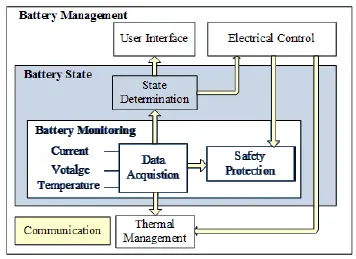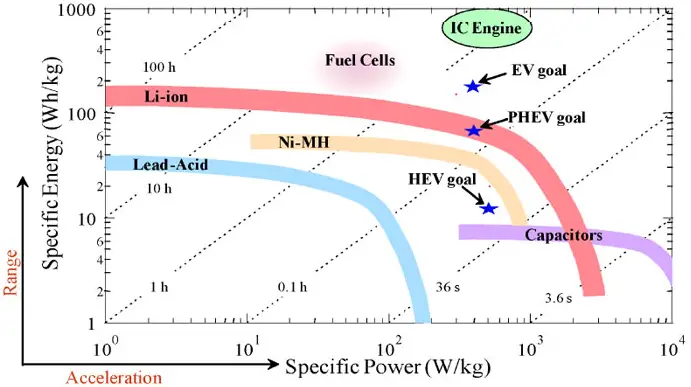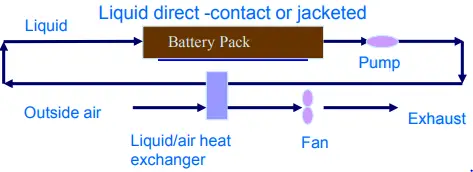Battery monitoring is vital for most electric vehicles because the safety, operation and even the life of the passengers depend on the battery system. The major function of the battery management system (BMS) is to check and control the status of the battery within their specified safe operating conditions.
One of the important parameters that are required to ensure safe charging and discharging is SOC (State of Charge).
Battery management system consists of a number of sensing devices for monitoring battery parameters that will be used in the algorithm for SOC estimation.
A BMS is an embedded system(purpose-built electronics plus processing to enable a specific application).
- BMS protects the safety of the battery operated device’s operator.
- BMS protects cells of a battery from damage in abuse/failure cases.
- BMS prolongs the life of the battery (normal operating cases).
- BMS maintains the battery in a state in which it can fulfill its functional design requirements.
- BMS Informs the application controller how to make the best use of the pack right now (e.g., power limits), control charger, etc.
Block Diagram of Battery management system

image reference: Xing, Yinjiao & W M Ma, Eden & Tsui, Kwok-Leung & Pecht, Michael. (2011). Battery Management Systems in Electric and Hybrid Vehicles. Energies. 4. . 10.3390/en4111840.
Ragone Plot
A Ragone plot is a plot of specific energy (in Wh/Kg) versus specific power (in W/Kg). It is used for performance comparison of various energy-storing devices.

Battery temperature is important as it affects battery performance. The temperature effects battery:
- Operation of the electrochemical system
- Round trip efficiency
- Charge acceptance
- Power and energy availability
- Safety and reliability
- Life and life-cycle cost
Battery temperature affects vehicle performance, reliability, safety, and life-cycle cost.
Need of Thermal Management System
1. Battery high-temperature summary
- Primary considerations life
- Safety
- Non-uniform aging due to thermal gradients.
2. Cooling typically required
- In hot environments (could be 24hours).
- During moderate to large current demands during drive.
- During fast charging.
3. Battery low-temperature summary
- Primary considerations performance.
- Damage due to charging too fast.
4. Heating typically required
- In cold environments during charging and discharging.
Battery Thermal Management System (BTMS) Requirements
- It should be compact.
- It should have lightweight.
- It can be easily packaged.
- Reliable
- Serviceable
- Low cost
- Low parasitic power
- Optimum temperature range
- Small temperature variation.
Thermal Control Using Air
1. Outside Air Ventilation

2. Cabin Air Ventilation

3. Heating/cooling of Air to Battery – Outside or Cabin Air

Battery Heating and Cooling Using Air
| S.No. | Advantages | Disadvantages |
| 1 | All waste heat eventually has to go to air. | Low heat transport capacity. |
| 2 | Separate cooling loop not required. | More temperature variation in the pack. |
| 3 | Low mass of air and distribution system. | Connected to cabin temperature control. |
| 4 | No leakage concern. | Potential of venting battery gas into the cabin. |
| 5 | No electrical short due to fluid concern. | High blower power. |
| 6 | Simple design. | Blower noise. |
| 7 | Lower cost & Easier maintenance. |
Thermal Control Using Liquid
1. Ambient cooling

2. Active dedicated cooling/heating

Battery Heating and Cooling Using Liquid
| S.No. | Advantages | Disadvantages |
| 1 | Pack temperature is more uniform – thermally stable |
Additional components |
| 2 | Good heat transport capacity | Weight |
| 3 | Better thermal control | Liquid conductivity – electrical isolation |
| 4 | Lower pumping power | Leakage potential |
| 5 | Lower volume, compact design | Higher maintenance |
| 6 | Higher viscosity at cold temperatures | |
| 7 | Higher cost |
Reference: https://www.nrel.gov/docs/fy13osti/52818.pdf
